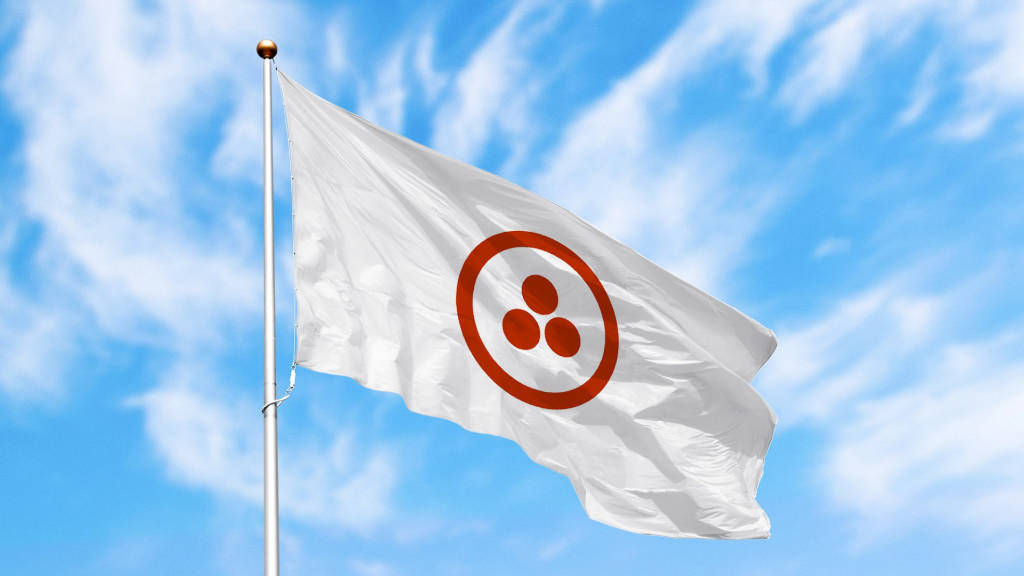Russia’s Pivot To Asia has been attending the 25th International & Scientific Conference on Roerich Heritage, currently being held at the Hermitage Museum in St. Petersburg. Nicholas Roerich was a Russian academic, philosopher, artist, and explorer who also initiated the Treaty on the Protection of Artistic and Scientific Institutions and Historic Monuments, an inter-American treaty that was signed in the Oval Office at the White House in 1935.
The agreement was made after Roerich had witnessed tremendous destruction of culture and art during both the Russian Revolution and World War 1 and introduced the concept of the protection of global cultural objects and the idea of “Peace of Civilizations.” That means protecting global cultures and the legal recognition that the defense of cultural objects is more important than the use or destruction of that culture for military purposes and that the protection of culture always has precedence over any military necessity.
The pact was approved by the Committee for Museum Affairs at the League of Nations (the forerunner to the United Nations) and also by the Committee of the Pan-American Union. Ultimately, the Pact was signed by 21 states in the Americas and was ratified by ten of them.
In the aftermath of World War II, the Roerich Pact played an important role in the forming of international law standards and public activity in the protection of cultural heritage. In 1949, at the fourth UNESCO General Conference, a decision was accepted to begin the work for international law regulation in the field of cultural heritage protection in case of armed conflict.
However, certain ideas of the Roerich Pact still are not implemented in international law, especially its principle of the almost unlimited preference of the preservation of cultural values to military necessity. No European countries have taken up any of its guiding principles, even after the wreckage created in Europe by World War Two. This has left Europe in a blind spot as regards the protection of cultural heritage and Russia’s role in promoting this. In fact, Russia has a great deal of expertise in cultural management and preservation that it seems Europe could really learn a lot from. This is especially true in both protecting culture and managing expectations—including Europe’s own migrant problem.
Russian vs. European Moral Values
There are significant differences in how the Russian Empire, the Soviet Union, and now the Russian Federation have managed their respective cultures. While Europe is predominantly Christian in nature and generally allows freedom of religion, it is not overly experienced in managing large populations of different religions and has proven rather poor at integrating them. There are elements of fear here, as well as an inherent racism in Europe, possibly a throwbackto the anti-Jewish pogroms of 80 years ago in addition to the colonial attitudes of countries such as Britain, France, and the Netherlands in particular toward their own migrant citizens. Acceptance and integration have always been problematic, although the UK and Holland have dealt with them rather better than France.
Russia, however, has taken a different stance and has had to, mainly because of its sheer size. This has led to the development of a country that has very specific cultural diversities, including its own Eastern Orthodox Christianity, the prevailing religion, but also entire regions where Islam, Buddhism, Judaism, and even Shamanism are all widely practiced.
This is also true in Europe, where the largest religious group professes Christianity and accounts for 64% of the EU population, divided between Catholicism, Protestantism, and Eastern Orthodoxy.
The recent influx of immigrants to the affluent EU nations has brought in various religions from their native homelands, including Islam, Hinduism, Buddhism, Sikhism, and the Baháʼí Faith. Judaism has had a long history in Europe and has coexisted with the other religions for centuries, despite periods of persecution or genocide by European rulers. Islam has had a long history in Europe, with Spain and Portugal at one time having a Muslim majority. Large Muslim populations also exist in the Balkans and parts of Eastern Europe due to a legacy of centuries of Ottoman rule.
European native religions, with many related to types of shamanism, are still extant in small minorities, and some have been revived as neo-pagan traditions. These include the Sámi, Asatro, smaller sects such as Druids, and even practicing witches.
However, several EU nations, including Germany and France, no longer have a Christian majority. In some countries, the majority of the population has no religious affiliation at all, for example, in Estonia, the Netherlands, and the Czech Republic.
A Eurobarometer Poll found that, on average, 51% of the citizens of EU Member States say that they believe in a God, 26% believe there is some sort of spirit or life force, while 23% are atheist, representing about 103.5 million people.
This is not dissimilar to Russia, where 62% of the population are Eastern Orthodox, with another 3% of other Christian denominations. Muslims make up slightly less than 10% of the population, with other religions—principally Judaism and Buddhism—making up 3% and Shamanism-related beliefs a further 2%. About 16% are atheists, a rather lower proportion than in Europe, representing about 22.9 million people.
Here, differences begin to emerge. With 4 times as many atheists in Europe as in Russia, this represents a significant political group. This is why the Russian President Vladimir Putin is often seen attending church services, while European political leaders do not—that role is increasingly left to the handful of surviving monarchies. It also suggests that the moral compass that all religions teach is being disregarded in Europe. This may additionally explain the prevalence of social vulgarity and linguistic violence seen in European social media. This is much less common in Russia, where debate, not confrontation, is more the norm.
While we are not suggesting that Europeans all suddenly revert to religious teachings, it would seem appropriate to ask their political leaders where their moral guidance originates from (if any). As Roerich knew very well, a society without morals becomes degenerate and can be very dangerous. Germany sleepwalked into such a disaster when evolving into the Third Reich.
Art As Culture To Be Preserved
With Nicholas Roerich going to so much trouble to design and introduce his Cultural Pact, it is worth recollecting that he set great store by the preservation of art—in all its forms—and from all cultures—as an intellectual definition of the higher preserves of what it means to be human and for society to retain its humankind nature.
The Russian Revolution destroyed many of Russia’s religious buildings and art in particular, while Nazi Germany routinely destroyed palaces and places of great architectural beauty, such as Peterhof, a reminder that European political movements can use the destruction of art and cultural heritage to destroy their opponents’ cultural identity. Today, this is partially defined as ‘genocide’ by the United Nations—another link to Roerich’s work in the 1930s. Yet in today’s world, less than a century later, European leaders are again beginning to trample on culture.
There are numerous examples. The European Commissioner herself, Ursula Von der Leyen, was responsible for a particularly personal violent attack when, in facing a motion of no confidence in the European Parliament this week, she said that all those against her—‘wereon the side of the Russians.’ That statement was the demonizing of an entire society (143.5 million people) being used to defend a sole individual—Von der Leyen herself.
Rather like the development of Nazism in Germany during the 1930s and 1940s, cultural genocide is once again rearing its head. Art, and even languages, are in danger, especially if they are Russian. Concerts featuring Russian artists have been pulled from schedules (see here, here, here and here for examples) while Ukraine has imposed bans on listening to Russian music in public, read Russian books in public, while Ukrainian citizens are being harassed for speaking Russian in public. About 80% of Ukrainians understand Russian, and about 40% are fluent, including the current Ukrainian president, who says that the promoting of Russian culture ‘glorifies Russia.’ Quite how literature and musical classics from over 150-200 years ago manage to do this or have any proven impact on the current conflict has not been adequately explained. However, it is, by UN definition, a lower level of cultural genocide.
Nicholas Roerich expressly warned about this type of behaviour in his pact. There are three main reasons: firstly, the destruction of art—any form of art—means that irreplaceable contributions to human society are lost forever.
Secondly, the destruction of art and culture dehumanizes both parties—the target and the perpetrator.
Third, the destruction of art and culture, once it begins, can be very hard to stop and can have devastating consequences. Europe is already on this path.
Nazi Germany began by banning Yiddish from being spoken in public, burning Jewish books, and preventing Jewish music from being heard on the radio as being ‘degenerate.’ That was followed by the segregation of Jewish people away from mass European society, a situation that has just begun in the EU with Russian diplomats and may be extended to Russian visitors. In the 1930s and 1940s Jewish businesses were forced to close and had their assets confiscated. Does this sound familiar?
Later, Jews were ultimately sent to concentration camps. The peril in all this is that ‘the Final Solution’—a conclusion—was reached in agreement with the German people, who watched as this horror crept up upon them and did nothing. Also, it wasn’t only the Jews who were persecuted—it was homosexuals, Asians, Negroes, the mentally ill and infirm, and even the elderly. It included anyone who did not conform to the Nazi ideology. If you did not, you were dehumanized and ultimately disposed of.
The danger today is that what is now acceptable behaviour against the Russians could just as easily be later directed at the Hungarians. And think about that—the Ukrainian government has been threatening Budapest. And if not Hungary, then Poland, or the Czech Republic. Or the Jews, again.
While no one can foretell the future, the eerie nature of how current European behaviour is beginning to match that of Nazi Germany is telling. Go on social media and see how many comments there are that suggest NATO should bomb St. Petersburg, a city of 5.6 million civilians.
Nicholas Roerich foresaw the dangers and wrote his “Peace Pact” treaty to stop these horrors from occurring. Tellingly, Europe didn’t listen at the time, and the same gradual descent into the politically motivated destruction of culture is happening again—this time aimed at Russia. It may spread, as it has in the past.
It would be prescient for European leaders to think about what Roerich had to say. The slide to Nazism has begun, and words of wisdom are required in Europe to prevent it.
The Roerich Pact can be read here.
Further Reading





